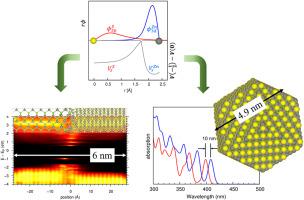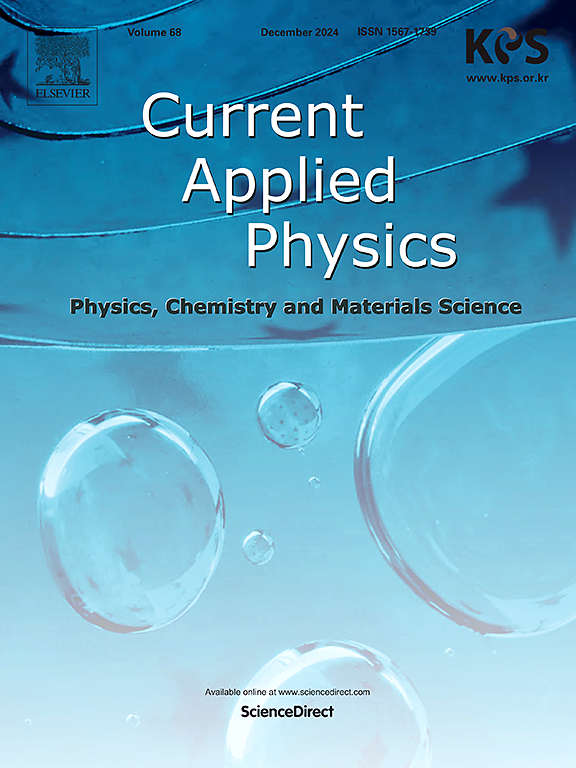利用 GGA-1/2 形式对半导体异质结构进行精确高效的电子结构计算
IF 3.1
4区 物理与天体物理
Q3 MATERIALS SCIENCE, MULTIDISCIPLINARY
引用次数: 0
摘要
我们已经证明,半导体之间的界面、固体中的位错以及实际尺寸的量子点的电子结构--由于涉及大量原子而难以模拟--可以通过使用伪原子轨道(PAO)基础实施 GGA-1/2 形式化,以低成本、高精度的方式计算出来。四种界面(InAs/AlSb、ZnSe/ZnS、GaN/SiO2 和锐钛矿/钌)的带偏移,特别是价带的偏移,以及直径为 4.9 nm 的 ZnSe/ZnS 核/壳量子点的光吸收光谱和壳引起的红移都得到了精确再现。PAO 基和半占位法的结合是研究半导体异质结构电子结构的一种高度现实的方法,因为它允许在精确预测带边位置的同时放宽对结构模型尺寸的限制。本文章由计算机程序翻译,如有差异,请以英文原文为准。

Accurate and efficient electronic structure calculations of semiconductor heterostructures using GGA-1/2 formalism
We have demonstrated that the electronic structures of interfaces between semiconductors, dislocations in solids, and real-size quantum dots—which are challenging to simulate due to the large number of atoms involved—can be calculated in a cost-effective and accurate manner through the implementation of the GGA-1/2 formalism with a pseudo-atomic orbital (PAO) basis. The band offsets, particularly those of the valence bands, of four interfaces (InAs/AlSb, ZnSe/ZnS, GaN/SiO2, and anatase/rutile) and the light absorption spectrum of a ZnSe/ZnS core/shell quantum dot with a diameter of 4.9 nm and the redshift due to the shell were accurately reproduced. The combination of the PAO basis and half-occupation method represents a highly realistic approach to studying the electronic structure of semiconductor heterostructures, as it allows for the relaxation of constraints in the size of the structural model while accurately predicting band edge positions.
求助全文
通过发布文献求助,成功后即可免费获取论文全文。
去求助
来源期刊

Current Applied Physics
物理-材料科学:综合
CiteScore
4.80
自引率
0.00%
发文量
213
审稿时长
33 days
期刊介绍:
Current Applied Physics (Curr. Appl. Phys.) is a monthly published international journal covering all the fields of applied science investigating the physics of the advanced materials for future applications.
Other areas covered: Experimental and theoretical aspects of advanced materials and devices dealing with synthesis or structural chemistry, physical and electronic properties, photonics, engineering applications, and uniquely pertinent measurement or analytical techniques.
Current Applied Physics, published since 2001, covers physics, chemistry and materials science, including bio-materials, with their engineering aspects. It is a truly interdisciplinary journal opening a forum for scientists of all related fields, a unique point of the journal discriminating it from other worldwide and/or Pacific Rim applied physics journals.
Regular research papers, letters and review articles with contents meeting the scope of the journal will be considered for publication after peer review.
The Journal is owned by the Korean Physical Society.
 求助内容:
求助内容: 应助结果提醒方式:
应助结果提醒方式:


